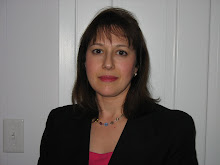In fact, EB suggests that all people are infinitely creative, if they would just allow themselves to be. He also encourages people to know that all the infinite substance they need to create is already within them. These are the divine ideas that come from what he and other Unity theologians call God-Mind. He reminds his readers in TCP that all people "live and move and have [their] being in infinite Mind. There is no way that you can can get more of infinite Mind in you, for infinite Mind is present in its entirety at every point in space. There was no more of infinite Mind in Jesus, or in Buddha, or in Shakespeare, or in Einstein than there is present in you this moment and every moment of your life" (p. 79). These are greatly encouraging and even inspiring words. Yet, how many people are daunted by the idea that they have the same amount of creativity in them as Shakespeare?
It might be helpful to offer here that all these people are famous, but that EB is not talking about using one's creativity for fame. Some people feel a desire to create something and yet shy away from it because they think, "How could this be any good? I did it. Who would pay any attention to me?" EB's emphasis is on expressing the divine within. This is key. The divine within has many forms of expression. Let's consider just a few: In nearly every neighborhood, anywhere one goes in this country, there is always at least one home that has a beautiful garden. Nearly every family has one person who is the best baker, best storyteller, best dressed or best comedian. Someone is master decorator and someone else is a master painter. People all over the world have jobs in which they create a product, design a system or negotiate a deal. Each of these people expresses his or her creativity. Most of them are not famous and never will have their names on the front page of a major daily newspaper. The goal is to express one's divine creativity and find joy in it, not to become famous.
In The Creative Life, EB's last book, published in 2001, EB says that one's goal should be change her mind-set, to know that she is "one with God and that all [her] works are good" (p.4). In this final work, EB uses the Creation Story from Genesis to help people live more creative lives. This is his advice for applying the seven days of creation to one's own life:
- "Let there Be Light": Light represents illumination. The light allows each person to recognize God as the source of his/her supply. The light allows each person to develop self-awareness and appreciation of one's inner wisdom. EB wants each person to look through "God-colored glasses" to realize that God is within.
- "Let there Be a Firmament": Firmament represents faith. Through faith, each person affirms the reality of the divine ideas within him as his own divine inheritance. A person needs to have faith in his own ability to create before the creation can become manifest in the world. As EB is fond of doing, he uses the image of turning up a rheostat; when the rheostat is fully turned up, the light is brightest. When a person is centered in his faith, he is connected to the divine energy needed to create.
- "Let the Dray Land Appear": Dry land represents imagination, which EB calls the "I AMaging" process. Through imagination, a person forms and shapes her own desired good from the divine ideas within her. EB says that this is seeing from an image that is unique to each particular person. EB also urges one to avoid worrying because worry blocks the creative flow developed within one's imagination.
- "Let there Be Two Great Lights": The two great lights, the sun and the moon, represent one's will and understanding. As a person develops spiritual understanding, he must become willing to be guided to create from the image he has seen. In allowing himself to be guided, a person understands what he is to create and has the will to make it manifest.
- "Let the Waters Swarm with Living Creatures": The swarm represents discernment or discrimination or judgment. By being discerning about what actions she takes, a person can make wise decisions about her life and about how to create what she understands her creation to be. EB specifically notes that many people have a "swarming" of ideas and urges that they be patient with the creative flow, trusting and allowing time to be guided and directed as each discerns.
- "Let Us Make Man in Our Image": The creation of man in our image represents the wisdom and love that exist within each person. They symbolize each person's inherent wholeness, and within each person wisdom and love unite to allow a person to manifest his desires and express himself fully. This is one of the places that EB says that each person must "evolve" what has "been involved" in him (p. 113). To EB, this also is the expression of the Christ presence within, the same presence that Jesus expressed and which EB encourages each person to express also.
- "God Rested": God resting represents the Sabbath. By resting and allowing oneself to "be" instead of "do," a person can realize and feel assured that her desires are being fulfilled and that she can go forward to manifest the creative ideas which she has discerned are hers to create. EB especially notes that one does not need to attend church on Sunday or synagogue on Saturday to experience a Sabbath. In fact, he encourages taking many restful moments, which he calls "creative intermissions."
